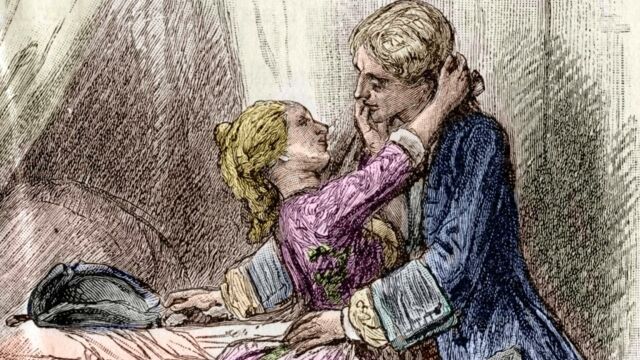'A real Casanova!' – this expression or title is still often applied to men known for their charm and success with women. The name has firmly established itself in the English language as well – and virtually everyone knows what it means.
Discover our latest podcast
Looking back through history, we find that such names often trace back to real individuals whose lives have become etched into the course of history, ensuring their legacy lives on. The origins of some stories, however, have been lost over time: many have changed so much over the centuries that it’s hard to separate fact from fiction – such as the legend of the Loch Ness Monster.
In the case of Casanova, however, there was indeed a real person who gave the name its legendary meaning.
The historical namesake
Casanova – born Giacomo Casanova on 2 April 1725 in Venice – claimed, according to BILD, to have 'loved women to the point of madness.' In his memoirs Histoire de ma vie (The Story of My Life), he describes encounters with 116 sexual partners – with whom he likely fathered several children.
The Italian womaniser was, however, much more than just that, as historians point out. Casanova, who died in 1798 in what is now the Czech Republic, also worked as a cleric, violinist, alchemist, silk manufacturer, and even as a lawyer, mathematician, financial adviser and soldier.
An immortal name
Thanks to these varied roles, Casanova travelled extensively in his time. Through his connections, he was a guest of King Louis XV of France, the Pope, Catherine the Great of Russia, and Frederick II of Prussia, among others. He also visited Nice, Rome, Marseille, Corfu, modern-day Istanbul – and travelled all over the world as well.
Because of his lifestyle, many experts today advocate for a more nuanced view of Casanova, rather than simply reducing him to the stereotype of a philanderer. The magazine web.de reports:
He wasn’t this womaniser, this notorious seducer he was later made out to be.
In fact, his detailed memoirs – the manuscript of which is nearly 3,600 pages long – have played a significant role in helping historians better understand the Rococo era, a period characterised by extravagance and sensuality.
This year marks the 300th anniversary of Giacomo Casanova’s birth. And although over the centuries parts of his story may have been lost or embellished, his name lives on to this day through countless films, books, and musical works.
This article has been translated from Gentside DE.
Read more:
Who was Roy Cohn? Donald Trump's former mentor and close confidant
Queen Elizabeth II's lookalike passes away at 96: Who was Jeannette Charles?
Sources used:
BILD: 300 Jahre Casanova, der größte Verführer der Geschichte: Sex mit Nonne – und der Botschafter schaute zu
web.de: Der Vater aller Playboys: Das Leben von Giacomo Casanova















